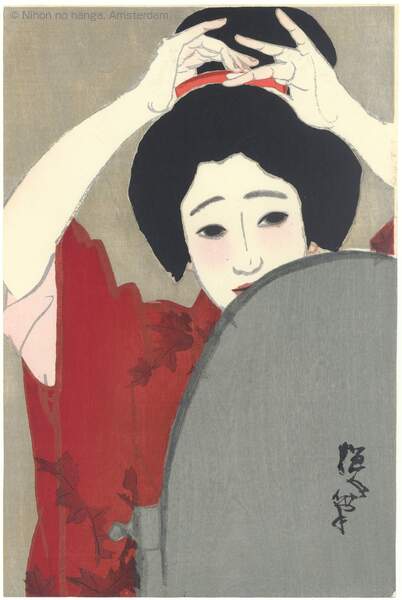2| Broad Strokes and Fine Lines
-

-
During the late 19th century, Japanese prints of the Ukiyo-e (pictures of the 'floating world') tradition, captured the attention of audiences in Europe and the United States, and were sought after vigorously by collectors, museums, and artists on both continents; at the same time, however, the traditional Japanese printmaking world faced near extinction due to the onslaught of rival printing techniques imported from the West. Lithographic and photographic reproduction techniques allowed for greater realism than prints had ever afforded, and these advanced media were eating away at the centuries-old industry of xylographic reproduction.
In addition to Ukiyo-e finding their way to Europe and the United States, young Japanese artists also made their way abroad to Europe, particularly to France. Most famous and influential was Kuroda Seiki (1866-1924), who
became a strong force in the development of Western-style painting in Japan; another was Yamamoto Kanae (1882-1946), who championed Western ideas of the artist's individual role in the creative process. These artists absorbed European artistic lifestyles and methods, and returned to Japan to implement these new ideas. Conversely, Western scholars such as Ernest Fenollosa (1853-1908) came to Japan and impressed on the Japanese the need to conserve and appreciate the traditional arts. Western artists such as Antonio Fontanesi (1818-1882), John La Farge (1835-1910), and later Emil Orlik (1870-1932), to name but a few, visited Japan and absorbed (La Farge and Orlik) and influenced (Fontanesi) the Japanese art world.Thus, after its long period of seclusion from the outside world, Japan plunged into the intense international trafficking of cultural ideas. Within Japan, this led to a clash of ideologies and intense battles between those who propagated Western art and those who emphasized their own traditional 'Japanese' qualities.
-
Related Entries
